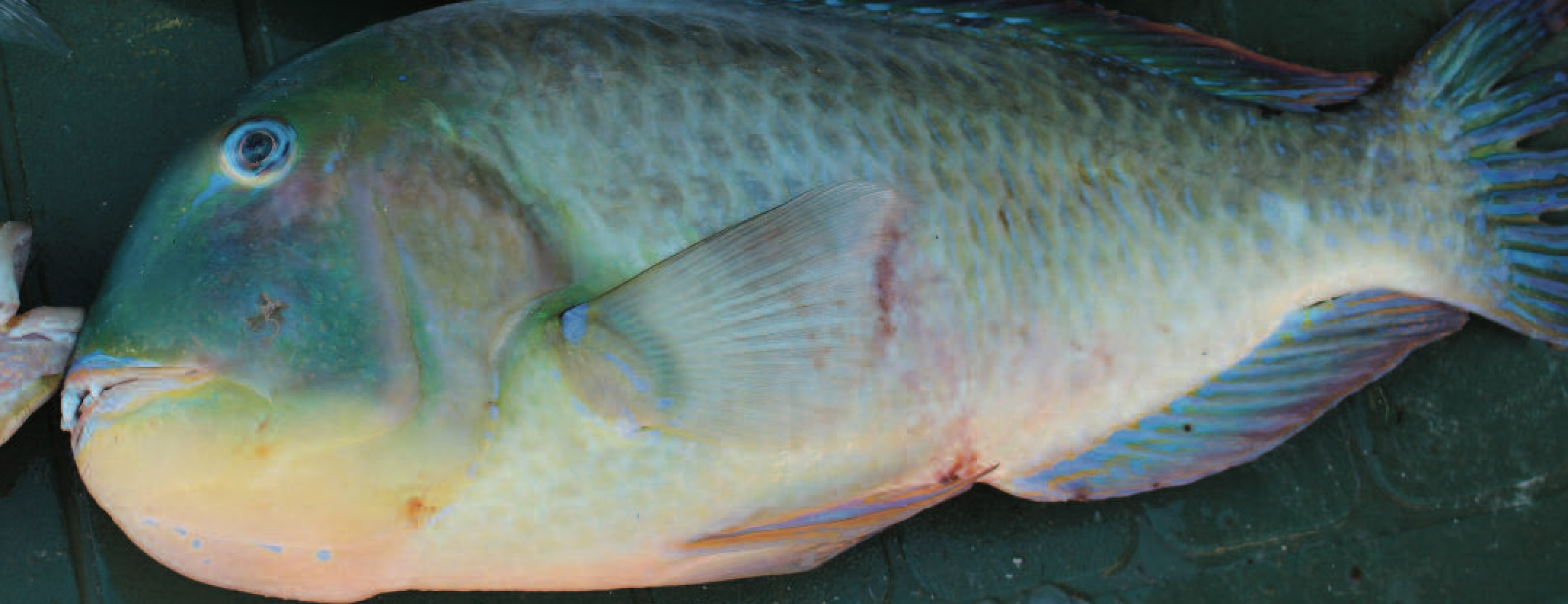2016 - THE BLUEBONE'S HAREM
They are renowned for their incredible colours, tenacious fighting abilities and as the sweetest tasting fish in the Kimberley. They are also one of the smartest cookies in the ocean as they lazily swim along with their pectoral fins, not their tail, and they have become adept at using tools.
If one fish is the heart and soul of Broome it has to be the Bluebone. They are so charismatic and abundant, the Pigram brothers even sing about Bluebone coming on the bite! Their real name is somewhat misleading, Black Spot Tusk fish, but their bones are blue! They are renowned for their incredible colours, tenacious fighting abilities and as the sweetest tasting fish in the Kimberley. They are also one of the smartest cookies in the ocean as they lazily swim along with their pectoral fins, not their tail, and they have become adept at using tools. Bluebone will pick up shells with their extravagant tusks and go to an anvil shaped rock that’s just the right shape. With incredible dexterity they smash the shell against the rock, cracking it open and feast on the soft innards. If your game enough, you can snorkel around reefs in the Kimberley and find a smashing stone which will be surrounded by broken shells. In Broome this means feasting on little pearl shells, probably why they are so tasty.
Not only are they smart, they also have a very interesting life history. All Bluebone are born female and at around 10 years of age, some will transition to become males. In fact, the female to male ratio can be as high as 14:1. As this transition happens the green-yellow female colouration changes to the sparkling bright blue we are used to seeing in our eskies. Big Bluebone are the fish equivalent of Playboy magazine’s Hugh Hefner. They are smart, good looking, old and have a whole harem of beautiful young ladies to look after. This is a big job as they have to guard their patch of reef from other wayward males whilst keeping their ladies safe and content. Despite all the bright colours and aggressive posturing, the fishy Hugh Hefner has one embarrassing flaw, small testes! This means Hugh can only produce enough sperm for one or two females per day. Considering they spawn repeatedly all wet season; Hugh is kept very busy keeping up to his ladies constant egg production.
The ladies seem to get the good side of the bargain. They hang out together, go shopping for pearl shell and crab, and don’t have to worry about unwanted advances as Hugh is constantly looking out for them. Even when they settle down at night in a concealed crack in the reef and wrap themselves in a protective slimy goo, Hugh will be ever present. What happens if fisherfolk catch and kill Hugh? Pandemonium? Actually, the largest female in the harem will immediately transition to male and a new Hugh takes centre stage.
Sounds like the perfect system. Lots of females producing lots of eggs for most of the wet season. If Hugh dies, a female will transition and take his place. However, current fisheries regulations have a minimum legal length of 400mm. This is well below the size of transition to male so in heavily fished areas, like Roebuck Bay, the males may never reach a ripe old age and attain Hugh Hefner status. Young males can never look after their harem as good as Hugh and as a result, reproduction is impaired. More importantly if larger fish are constantly being killed, it forces smaller females to transition to males early, resulting in a downward spiral of smaller, less reproductive fish.
What is the best way of ensuring sustainable stocks of the smartest, tastiest fish in the Kimberley? Maximum size limits to protect the Hugh’s will not work as firstly no one wants to throw back a big Bluebone and secondly these fish are very susceptible to Barotrauma and will likely die when caught from greater than 10m of water. Shark Bay and Ningaloo have seen stocks of Bluebone, and their close cousins Baldchin Grouper, rebound with the introduction of marine parks and sanctuary zones. If the new marine parks in the Kimberleys have enough sanctuary zones in the right places, the tusky Hugh Hefners can forever guard their harem, and once again, be the most abundant fish in our inshore reef systems.

